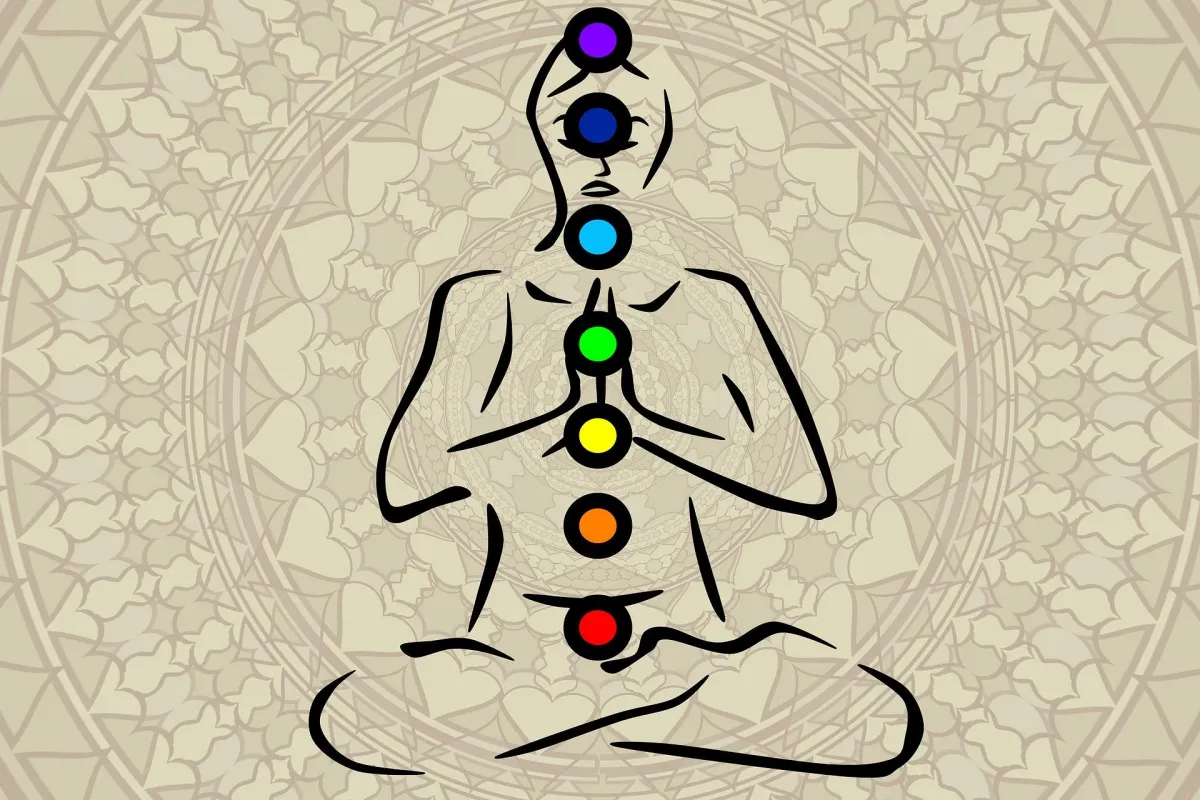Blog

Chakras
When you first downloaded this app, you took a short quiz about your general happiness and wellbeing. The more honest you were the more accurate the algorithm was in determining which of your chakras was blocked at that time.
Even Science acknowledges that there are seven main chakras that run along your spine. The idea of this ever-flowing continuum of energy is the basis of chakra theory.
When emotions or chakras are blocked, this blockage creates an imbalance and lack of free flow in your system, which can then lead to physical, emotional and spiritual health issues. This blockage creates an imbalance and lack of free flow in your system, which can then lead to physical, emotional and spiritual health issues.
Lets learn more about each Chakra:
1. Root Chakra: Your root chakra is located at the base of your spine in the tailbone area. It represents the feeling of being grounded and secure, both physically and emotionally. It develops from age one to seven years, and this is represented by the color red. A blocked root chakra leads to feelings of insecurity about finances, our basic needs (e.g., food, clothes, shelter), and our well-being.
2. Sacral Chakra: Your sacral chakra is located just below the bellybutton and just above the pubic bone. It represents your connection and ability to accept new experiences and impacts your feelings of self-worth. It is associated with your sense of well-being around pleasure, sexuality, and creativity. This is represented by orange and develops between the ages of seven — fourteen.
3. Solar Plexus Chakra: This chakra is located in the upper abdomen, in the stomach area. It is the chakra of our personal power. It is related to your self-esteem, selfworth, and self-confidence. It is represented by yellow and develops between the ages of fourteen — twenty-one years. 4. Heart Chakra: This chakra is located in the center of the chest, just above the heart. It’s the middle one of the seven chakras, so it bridges the gap between our upper and lower chakras. It represents our ability to love and connect to others. When out of alignment, it can make us feel lonely, insecure, and isolated. It is represented by green and develops at age twenty-one to twenty-eight years.
5. Throat Chakra: This chakra is located in the throat region. It is related to your ability to communicate with compassion and to feel confident when you speak. Blocks or misalignments can be seen through a compulsion to dominate conversation, speaking without thinking, and having trouble speaking your mind. It is represented by the color blue and develops at the age of twenty-eight to thirty-five years.
6. Third Eye Chakra: This chakra is located between the eyes, in the center of the forehead. It represents your ability to focus, act on your intuition, imagine, see the bigger picture wisdom, and make big decisions. It’s represented by the color indigo and develops at the age of thirty-five to forty-two years.
7. Crown Chakra: Your crown chakra is your highest chakra, located at the very top of your head. The crown chakra is linked to every other chakra, and also to your brain and nervous system. It is considered the chakra of enlightenment and represents our connection to our life’s purpose and spirituality. Those with a blocked crown chakra may seem narrow-minded, skeptical, or stubborn. When this chakra is open, it is thought to help keep all the other chakras open, and to bring the person to a state of bliss and enlightenment. It is represented by the color white and develops at the age of forty-three to fortynine years.
The chakras are all energetic centers of the body that correspond to feelings and emotions. To become emotionally intelligent, you must work to develop your crown chakra so that energy can flow freely in your body. The chakras are comparable to the organs of the subtle body (the energetic part of our body that can be felt but not seen). These energy centers follow a developmental path, beginning with the root chakra. This chakra is the foundation for safety and survival. It continues through the sacral chakra, the epicenter of emotional wellbeing and feelings. The solar plexus houses the belief system that contributes to our sense of self-worth. Only after the lower three chakras are formed and concretized can we begin to open the heart chakra. Throughout our lives, most of our feelings, behaviors and choices revolve around the three lower chakras. We have physical and emotional pain because we are not letting the free flow of energy.
It is common to link the heart chakra with romantic relationships, but it goes far beyond romance. If you want to open your heart chakra, loving others is not enough; you must first cultivate self-love. Until self-love has been developed, unconditional love cannot be shared. The ability to open the throat, third eye or the crown chakra is essential in letting the free flow of energy, but only a few people can master this practice.
Gaining mastery over your energy/prana enables you to take control of your state of mind and your emotions. If you are in the habit of giving off negative energy, you may find that people stay away from you. Consciously changing this habit by altering your energy will open the door to making you more approachable. Once you know how to regulate and control your energy, you have now become an emotionally intelligent person. The extent to which you are able to understand and manage your own emotions will open the gateway to knowing yourself at the deepest level. You must open yourself layer by layer, and when you do, you will soon reach a point where you will be able to observe your own emotions and discern why you are having them. Once you reach that point, you will be able to channel your energy and feel the emotions, both psychologically and physiologically, in a more subtle form.
Once you understand your own emotions and the behaviors they cause, it becomes easy to understand and manage your response to other people’s emotions. Moreover, you will be able to better understand the subtle emotions of others that may be hiding in the tone of their voice, in their facial expressions, or even in their body language. Once you better understand other people’s emotions and behavior, you will naturally become more adept at effectively responding to and interacting with them. Going through the chakra meditations section of this app will help you clear the blockages in your chakras.
…excerpt from “The Man With Zero Talent” by Sanjib Nandi, founder of Luvo Calming Guided Meditation App
Image by Gerd Altmann from Pixabay
Categories

© Copyright Luvo 2022
